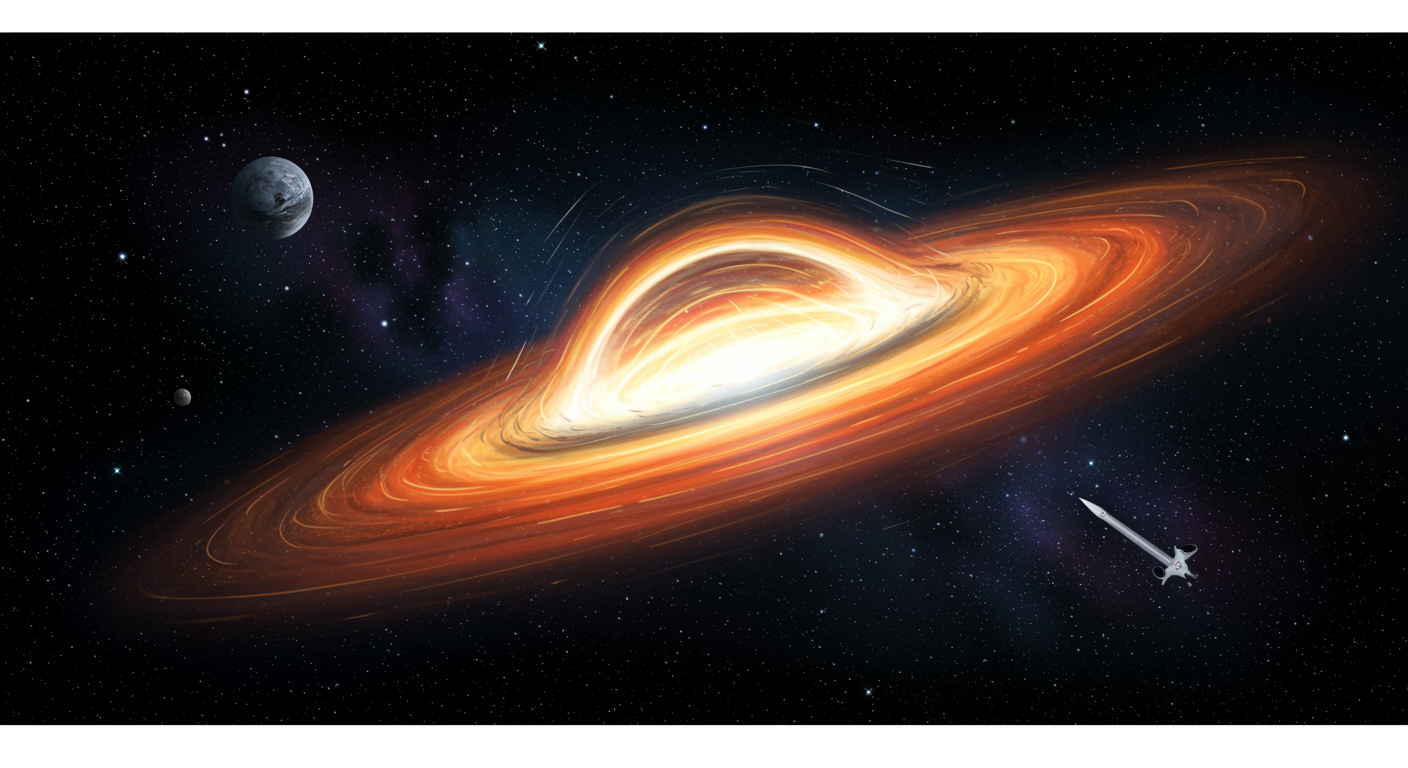
Black holes can be described with just three numbers. This remarkable simplicity stands in stark contrast to human complexity, where our personalities, experiences, physical features, and memories create an intricate web of individuality. Yet for some of the most extreme and powerful objects in the entire universe, that’s exactly how it works. These cosmic behemoths, born from the collapse of massive stars, can be entirely characterized by merely three fundamental properties: their mass, their angular momentum (or spin), and their electric charge.
This concept might sound too simple to be true, given the immense gravitational forces and mind-bending physics associated with black holes. You might envision a black hole swallowing a star, tearing apart a planet, or shaping entire galaxies, and assume such a complex entity would require an equally complex description. However, once matter crosses the event horizon – the point of no return – all its intricate details effectively vanish from the observable universe. All that remains are these three fundamental attributes, dictating how the black hole interacts with everything outside its boundary.
So, what are these three crucial numbers? First, there’s mass. This is perhaps the most intuitive property. Just like any other object in space, a black hole has mass. This mass determines the strength of its gravitational pull and the size of its event horizon. A more massive black hole will have a stronger gravitational field and a larger event horizon. From stellar-mass black holes, which are typically a few to tens of times the mass of our Sun, to supermassive black holes dwelling at the centers of galaxies, millions or even billions of times more massive, this number is paramount.
Second, we have angular momentum, more commonly referred to as spin. Most objects in the universe, from planets to stars and even entire galaxies, rotate. Black holes are no exception. They inherit the spin of the collapsing star that formed them, or they acquire spin as they accrete matter that spirals into them. A black hole’s spin can be very significant, altering the shape of the surrounding spacetime. Rapidly spinning black holes, known as Kerr black holes, drag spacetime around them in a phenomenon called frame-dragging, which can have profound effects on nearby matter, such as the jets of high-energy particles observed emanating from galactic cores.
Finally, there’s electric charge. While black holes could theoretically possess an electric charge, perhaps inheriting it from the charged particles of the star they formed from, astronomers believe most astrophysical black holes are virtually neutral. Any significant net electric charge would strongly attract oppositely charged particles from the surrounding space, quickly neutralizing it. Nevertheless, it remains a theoretically possible third descriptor, alongside mass and spin, essential for a complete mathematical definition of any black hole.
This remarkable simplicity is encapsulated by what physicists often refer to as the “No-Hair Theorem.” It suggests that a black hole has no other distinguishing features beyond its mass, spin, and charge. The term “hair” is a playful analogy, implying that all the complex information (the type of star it was, the elements it contained, its magnetic fields, or any other properties of the matter that fell into it) gets “shaved off” or smoothed out once it crosses the event horizon. This doesn’t mean the information is truly lost from the universe (that’s a whole other fascinating topic for quantum physicists), but rather that it becomes inaccessible and doesn’t manifest as an external, measurable property of the black hole itself.
Consider the immense amount of information contained within a collapsing star before it forms a black hole: its chemical composition, its internal structure, its magnetic field. Yet, after the collapse, all that complexity is distilled down to just three numbers. This makes black holes incredibly elegant in their fundamental description, even as they remain among the most mysterious and powerful objects in astronomy. This elegant simplicity allows researchers to model and understand their behavior using a relatively small set of parameters, despite their vast influence on the fabric of space and time.
This surprising reduction to three simple numbers offers a profound insight into the nature of gravity and the very limits of physical information. It underscores how, at its most fundamental level, gravity acts as a powerful eraser, simplifying what appears to be an infinitely complex system into a neat trio of defining characteristics. The universe, in its most extreme corners, sometimes reveals the most elegant truths.